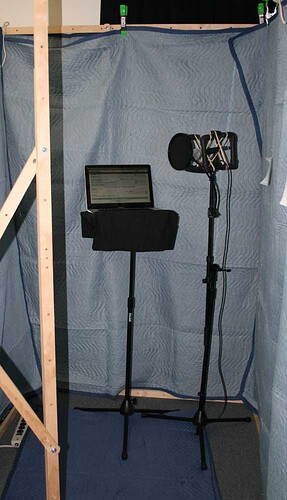I’m in Audacity 2.1.0 for these. That version has better tools.
is it fairly straightforward to apply?
No. We will be doing a lot of work and the final will sound more like AM radio than a high quality podcast. I know all microphones use the word “Studio” and “Professional” somewhere in the literature, but this isn’t one of those microphones. It’s hissy, screechy and it picks up noise from the environment. The notch filter is just to get rid of power hum in the show. Most microphones don’t do that.
Select the whole track by clicking just above the MUTE button.
– Effect > Equalization. Select Curve : AM Radio > OK That’s how I got rid of the high, sharp sounds in the performance. They can mess up the other tools. This is a good place to try custom equalization tools or even sibilance filters. That will prevent the muffled sound that I got.
– Effect > Equalization: LF_Rolloff for Speech. This one isn’t built-in. Steve wrote it and you have to install it into Audacity Equalization before you use it. I included it as an attachment. There should be a piece in the instructions how to install external filters.
http://manual.audacityteam.org/o/man/equalization.html
– Effect > Notch. 120Hz, Q 6. OK
– Effect > Noise Reduction. Drag-select a “clean” portion of the track. Something with no voice and no moving around. Effect > Noise Reduction: Profile.
Then select the whole clip by clicking above the MUTE button. Effect > Noise Removal: 12, 6, 6 (Top to bottom values), OK.
Effect > Normalize: Normalize to -3, Remove DC, OK
Effect > Compressor: -20dB, -50dB, 2:1, 0.2 sec, 1 sec (top to bottom). OK
Effect > Normalize: Normalize to -3, Remove DC, OK
That should give you a quiet track that passes ACX AudioBook specifications. We are doing a lot of surgery on the clip and it doesn’t sound very good compared to the original clip, but that’s what I got. ACX has been known to listen to work that only passes technical tests by the slimmest margin. Yours may then fail for voice quality.
Have you decided what to do about the room echo? That’s a physical problem. Hang moving blankets on the walls.
Koz
LF_rolloff_for_speech.xml.zip (326 Bytes)

